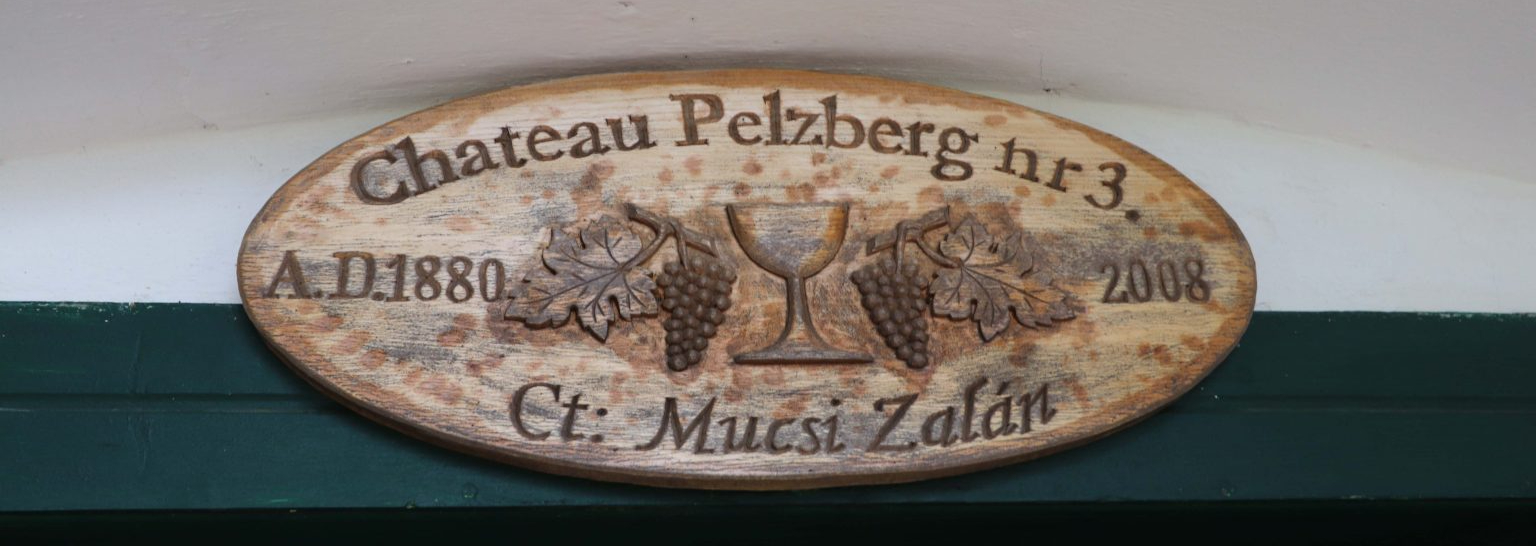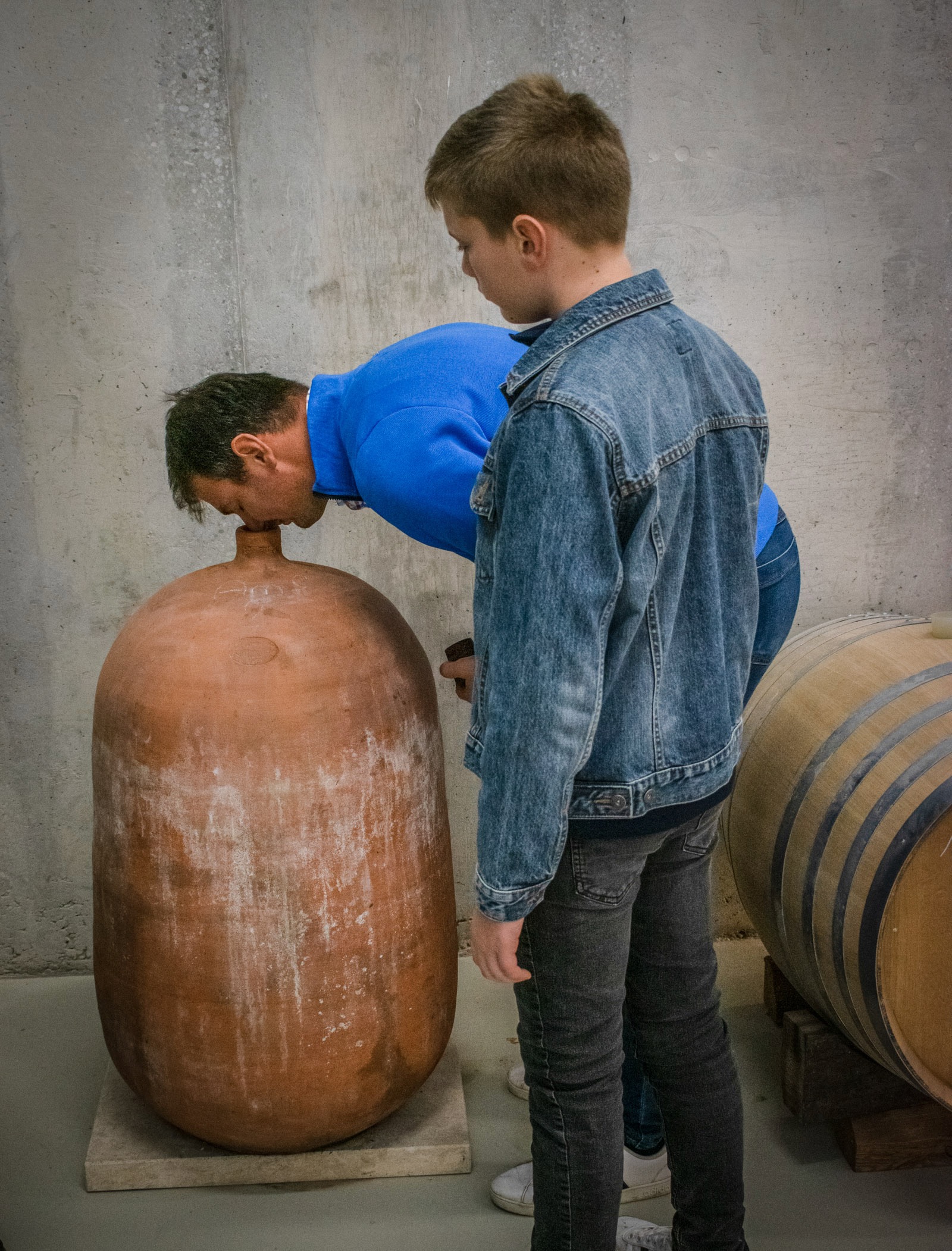

Grál Borpince, Tolna, Hungary
“I want to bring out the best in myself and my wines. I am happy when I'm in the vineyard following the development of the grapes. Our winery motto is: Nature in a bottle.” — Zalán Mucsi

At a Glance
2008
http://www.gralborpince.hu
Tolna
Cool continental with dry warm summers
Clay and loess with some limestone.
100m-250m
Rolling hills and valleys
Kékfrankos, Kadarka, Pinot Gris, Cabernet Franc, Merlot
2.5 hectares
Organic
Natural
http://www.gralborpince.hu
Tolna
Cool continental with dry warm summers
Clay and loess with some limestone.
100m-250m
Rolling hills and valleys
Kékfrankos, Kadarka, Pinot Gris, Cabernet Franc, Merlot
2.5 hectares
Organic
Natural

The People
Zalán Mucsi is a 3rd generation winemaker from the Great Plains (Alföld). He originally had his sights set on Szekszárd. Along the way he married Barbara in her small hometown of Gyönk in the Tolna region.

Gyönk, the smallest town in Hungary
After getting to know Gyönk better and looking around a bit, he soon fell in love with the Pelzberg vineyard. Much like two betrothals in one year, they took their wedding money and purchased a few hectares on the Pelzberg hill along with a cellar originally built in 1880. Similar to Szekszárd (which Tolna was a part of until 1997), it has deep Swabian roots, loess, clay and limestone soils, but is 1-2 degrees cooler.

Gyönk, the smallest town in Hungary
After getting to know Gyönk better and looking around a bit, he soon fell in love with the Pelzberg vineyard. Much like two betrothals in one year, they took their wedding money and purchased a few hectares on the Pelzberg hill along with a cellar originally built in 1880. Similar to Szekszárd (which Tolna was a part of until 1997), it has deep Swabian roots, loess, clay and limestone soils, but is 1-2 degrees cooler.

The winery
Vineyards
Using zero absorbable chemicals like herbicides and pesticides, everything has been farmed organically from the very beginning. The vineyard health and increasing immunity are both managed by orange oil, copper, sulfur and biodiversity. For many years the production was one hundred to three hundred bottles and all sold locally, so getting certification was not a priority.

In the Vineyard
Given growing exports and adding some vines, they are now in transition and getting certification in the coming years. Zalán has a great sense of humility toward nature and uses the vineyard to recharge and decompress despite the labor involved. He has a very gentle, nurturing, and thoughtful disposition. It’s not surprising that the 4th generation is following suit and already working towards taking over when the time comes. As Zalán puts it, the whole process should, “bring out the best in myself and in my wines.”

In the Vineyard
Given growing exports and adding some vines, they are now in transition and getting certification in the coming years. Zalán has a great sense of humility toward nature and uses the vineyard to recharge and decompress despite the labor involved. He has a very gentle, nurturing, and thoughtful disposition. It’s not surprising that the 4th generation is following suit and already working towards taking over when the time comes. As Zalán puts it, the whole process should, “bring out the best in myself and in my wines.”

In the Cellar
Winemaking
The winemaking is mostly all open vat fermented, manual punchdowns, all basket pressed, and most secondary fermentation and aging is usually in barrel. All fermentations are spontaneous without any temperature control. Wines are moved by gravity and pumps and are bottled unfiltered with a small sulfur addition. While there’s some new experimentation with carbonic fermentation, the 2018 Kadarka and 2017 Kékfrankos are refreshingly old school and well executed.

Red Wine , Organic
Kadarka;
10.9%
1.1 g/l
6.8 g/l
Kadarka;
10.9%
1.1 g/l
6.8 g/l
Kadarka is how we found Grál in the first place despite being perhaps better known in Hungary for Kékfrankos. The 2018 spent 17 days on the skins in open vat with manual punchdowns. Secondary fermentation was split between 1/3 in tank and 2/3 in 1000L neutral oak barrels for 10 months. Blended and bottled unfiltered with a small addition of sulfur. The slighter cooler climate compared to Szekszárd is evident here. Thicker skins, a longer ripening period, and the aromatics and acidity are all a little turned up. The bottle age also helps bring this all together. This vintage also conjures up older olfactory memories of first encountering Kadarka. And while we of course enjoy the carbonic, whole cluster, amphora, and botrytized versions of Kadarka, this is from an earlier era of vats, basket presses and large barrels.

Red Wine , Organic
Kadarka;
12.1%
2 g/l
5.7 g/l
Kadarka;
12.1%
2 g/l
5.7 g/l
Kadarka is how we found Grál in the first place despite being perhaps better known in Hungary for Kékfrankos. The 2018 spent 17 days on the skins in open vat with manual punchdowns. Secondary fermentation was split between 1/3 in tank and 2/3 in 1000L neutral oak barrels for 10 months. Blended and bottled unfiltered with a small addition of sulfur. The slighter cooler climate compared to Szekszárd is evident here. Thicker skins, a longer ripening period, and the aromatics and acidity are all a little turned up. The bottle age also helps bring this all together. This vintage also conjures up older olfactory memories of first encountering Kadarka. And while we of course enjoy the carbonic, whole cluster, amphora, and botrytized versions of Kadarka, this is from an earlier era of vats, basket presses and large barrels.

Red Wine , Organic
Kékfrankos;
11.6%
1.2 g/l
6.6 g/l
Kékfrankos;
11.6%
1.2 g/l
6.6 g/l
24 days of maceration. Primary fermentation was half in tank and half in open vats. Secondary fermentation was in 1st and 2nd fill oak barrels for 22 months. 2017 was a warm "southern style" vintage and the wine needed a lot more time in wood for both the oxygen and for the acidity to integrate into the riper flavors. Each vintage is a different barrel selection. 2020 was a much cooler vintage and is all in larger format neutral Hungarian oak for instance. At the same time, the 2017 is still just 12.5% and bottle aged to drink now. It's relatively rare when riper woodsy flavors find themselves in a lower alcohol and yet still refreshing package.

Red Wine , Organic
Kékfrankos;
11.6%
1.7 g/l
5.8 g/l
Kékfrankos;
11.6%
1.7 g/l
5.8 g/l
24 days of maceration. Primary fermentation was half in tank and half in open vats. Secondary fermentation was in 1st and 2nd fill oak barrels for 22 months. 2017 was a warm "southern style" vintage and the wine needed a lot more time in wood for both the oxygen and for the acidity to integrate into the riper flavors. Each vintage is a different barrel selection. 2020 was a much cooler vintage and is all in larger format neutral Hungarian oak for instance. At the same time, the 2017 is still just 12.5% and bottle aged to drink now. It's relatively rare when riper woodsy flavors find themselves in a lower alcohol and yet still refreshing package.